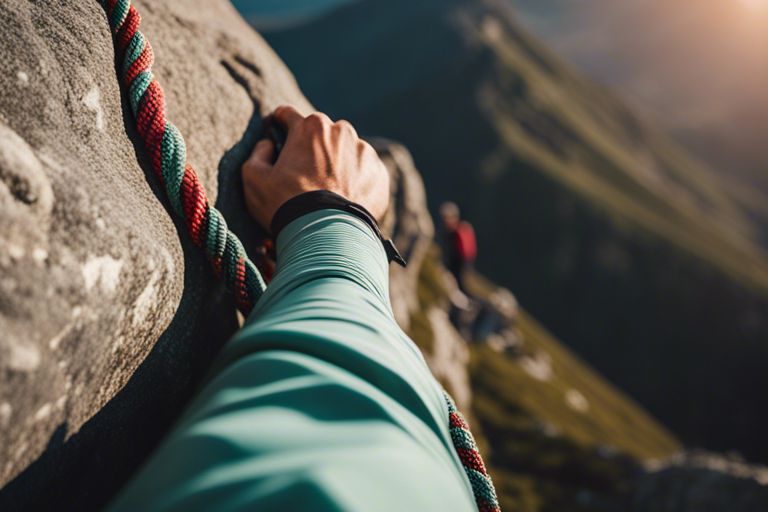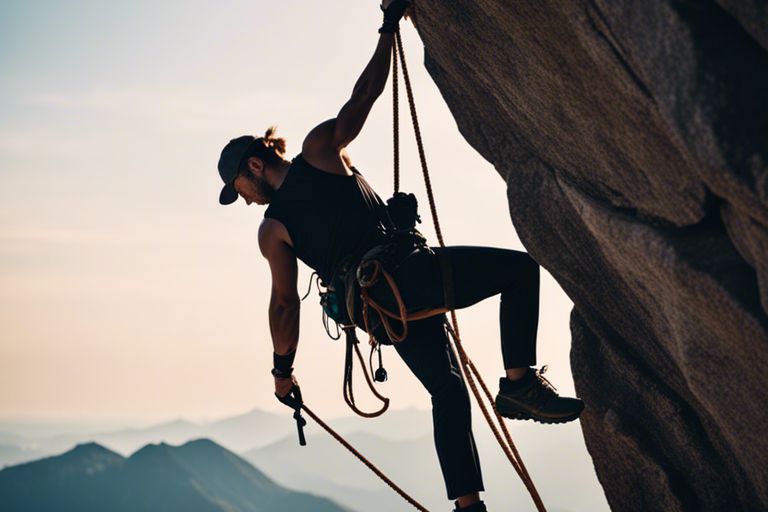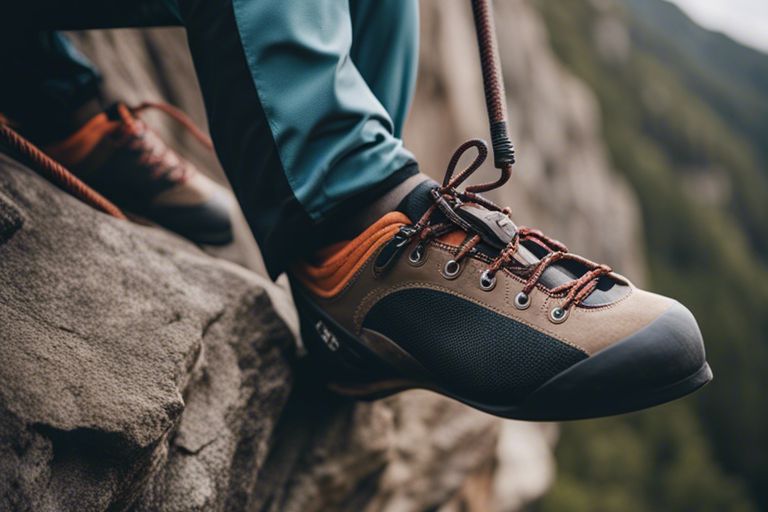It’s imperative to know how long your climbing rope will last as it directly impacts your safety while climbing. Understanding the lifespan of your gear ensures you can make informed decisions about when to retire and replace your rope. Let’s probe the factors that determine the longevity of climbing ropes and how you can best care for them to maximize their lifespan.
Key Takeaways:
- Proper care and maintenance are crucial: Regularly inspect your climbing rope for signs of wear, store it properly, and keep it clean to extend its lifespan.
- Retire your rope appropriately: Know when to retire your climbing rope based on factors like the number of falls it has taken, visible damage, and its age.
- Follow manufacturer guidelines: To ensure the longevity of your climbing rope, always follow the manufacturer’s recommendations for use, maintenance, and retirement.
Factors Affecting Rope Durability
To ensure the longevity of your climbing rope, you need to consider several factors that can affect its durability. These factors include material quality, usage frequency, and environmental conditions. By understanding how these elements impact your climbing rope, you can better maintain and care for it, ultimately extending its lifespan.
Material Quality
- Affecting the durability of your climbing rope, the quality of materials used in its construction is crucial. Ropes made from high-quality materials will generally last longer and withstand more wear and tear than those made from lower-quality materials.
- Assume that investing in a premium climbing rope crafted from top-notch materials will provide you with a more durable and reliable product in the long run.
Usage Frequency
An important factor affecting the lifespan of your climbing rope is how often you use it. The more frequently you climb, the quicker your rope will wear out. Regularly inspecting your rope for signs of damage and knowing when to replace it is vital to ensure your safety while climbing.
Quality climbing ropes are designed to withstand a certain number of falls before needing replacement. It’s important to keep track of your rope’s usage and retire it when it has reached its maximum fall limit to prevent accidents while climbing.
Environmental Conditions
- With outdoor climbing, environmental conditions can play a significant role in the longevity of your rope. Factors such as exposure to sunlight, moisture, dirt, and sharp edges can weaken the rope over time, making it more prone to damage.
Factors like UV exposure and moisture can degrade the fibers of your climbing rope, reducing its strength and overall lifespan. Properly storing your rope in a cool, dry place away from direct sunlight and moisture can help prolong its durability and keep you safe during your climbing adventures.
Signs of Wear and Tear
Even the most durable climbing ropes will eventually show signs of wear and tear. It is crucial to regularly inspect your rope for any potential issues that could compromise its safety and performance.
Visual Inspection
The first step in assessing the condition of your climbing rope is through a visual inspection. Check for frayed or fuzzy spots along the rope, as this could indicate internal damage. Look for any cuts, tears, or abrasions on the sheath that expose the core. If you notice any of these issues, it may be time to retire your rope for safety reasons.
Performance Indicators
Any changes in the performance of your climbing rope could also signal wear and tear. If your rope feels stiffer than usual, has flat spots, or kinks easily, these could be indicators of internal damage or excessive use. Additionally, if you find that your rope is not as dynamic or has trouble absorbing falls like it used to, it’s best to err on the side of caution and consider replacing it.
Signs of fatigue in a climbing rope can lead to catastrophic failure when you least expect it. Regularly inspecting your rope, being mindful of changes in its performance, and understanding its limitations are important practices to ensure your safety while climbing.
Rope Damage Classification
On rare occasions, despite your best efforts to care for your climbing rope, accidents or incidents can occur that result in damage. It’s crucial to categorize the type of damage your rope has sustained to determine if it’s still safe to use.
It is important to classify the damage into three main categories: minor, moderate, and severe. Minor damage may include slight fuzziness or a small cut on the sheath, while moderate damage could involve more significant cuts or abrasions. Severe damage, such as core exposure or a deep cut, should always result in immediate retirement of the rope to prevent any accidents while climbing. Regularly inspecting your rope and promptly addressing any damage can help extend its lifespan and keep you safe on your climbing adventures.

Average Lifespan of Climbing Ropes
Dynamic Ropes
An necessary piece of climbing gear, dynamic ropes have an average lifespan of about 5 years with regular use. Due to the repeated stress and impact they endure during falls, the fibers in the rope can break down over time, affecting its strength and safety. It is crucial to inspect your dynamic rope regularly for any signs of wear and tear, such as fraying sheath or core, which indicate it may be time to replace the rope.
Static Ropes
Ropes designed for top-roping, rappelling, or hauling gear are known as static ropes. These ropes have a longer lifespan compared to dynamic ropes, lasting around 10 years with proper care. Since static ropes are not designed to absorb the impact of falls like dynamic ropes, they experience less stress and wear, prolonging their lifespan. However, like all ropes, it is important to inspect your static rope regularly for any signs of damage or degradation.
To ensure the longevity of your static rope, store it properly in a dry and cool place away from direct sunlight and chemicals. Avoid stepping on the rope or subjecting it to sharp edges or abrasive surfaces that could weaken the fibers.
Semi-Static Ropes
Ropes categorized as semi-static are commonly used in activities like caving, rescue operations, or work at height where minimal stretch is required. These ropes typically have a lifespan of around 5-7 years, depending on usage and maintenance. Regular inspection of your semi-static rope is crucial, as any compromise in strength or integrity could pose a serious risk during climbs or rescue scenarios.
Climbing is an exhilarating sport, but safety should always be your top priority. By understanding the lifespan of different types of climbing ropes and taking proper care of your gear, you can ensure a safe and enjoyable climbing experience.
Maintenance and Care
Now, let’s discuss how you can maintain and care for your climbing rope to ensure its longevity and safety.
Cleaning and Storage
Storage: After each use, make sure to clean your climbing rope by gently scrubbing it with a mild soap and water solution to remove any dirt or debris. Once cleaned, dry the rope thoroughly away from direct sunlight before coiling it loosely and storing it in a cool, dry place. Avoid storing your rope near chemicals, extreme heat, or direct sunlight, as these can weaken the material over time.
Inspecting for Damage
Maintenance: Regularly inspect your climbing rope for any signs of wear, such as frayed areas, cuts, or discoloration. Pay close attention to the middle section of the rope, as this area tends to experience the most stress during climbs. If you notice any damage, consider retiring the rope to avoid any potential safety hazards.
Repair and Replacement
Care: To extend the lifespan of your climbing rope, it’s imperative to address any minor damages promptly. You can repair small cuts or abrasions using a rope repair kit, following the manufacturer’s instructions carefully. However, if the damage is extensive or affects the core of the rope, it’s best to replace the rope entirely to ensure your safety during climbs.

Rope Retirement Guidelines
Industry Standards
Guidelines set by industry standards recommend retiring a climbing rope after 5 years of regular use. Strains from falls, exposure to sunlight, dirt, and chemicals can weaken the rope’s fibers over time, affecting its strength and elasticity. It is crucial to inspect your rope regularly for signs of wear and damage and retire it if you notice any issues.
Personal Judgment
With climbing ropes, personal judgment plays a significant role in determining when to retire them. Factors like the frequency of use, types of climbs, and storage conditions can all impact the lifespan of your rope. If you notice any fraying, significant flattening of the rope, or cuts, it’s best to err on the side of caution and replace your rope.
For instance, if you primarily climb in sandy or dusty environments, your rope may wear out faster compared to someone who climbs on cleaner rock. Your familiarity with your rope and how it handles during climbs can also help you gauge when it’s time to retire it.
Record Keeping
On each climbing rope, there is a manufactured date that can help you keep track of its age. Additionally, maintaining a climbing journal where you log the dates and details of your climbs can give you a better understanding of how much wear and tear your rope has endured over time. By keeping accurate records, you can make more informed decisions about when to retire your climbing rope.
This approach allows you to track the history of your rope and make educated decisions based on its condition rather than relying solely on a general timeframe for retirement. Bear in mind, safety should always be your top priority when it comes to climbing equipment, so don’t hesitate to replace your rope if you have any doubts about its integrity.
Extending Rope Lifespan
After investing in a quality climbing rope, you’ll want to ensure it lasts as long as possible. Extending the lifespan of your rope requires proper care and maintenance. By following some key techniques, you can prolong the life of your climbing rope and keep yourself safe while scaling those rocks and cliffs.
Proper Use Techniques
Techniques such as belaying correctly, avoiding sharp edges, and minimizing rope drag can significantly impact the longevity of your climbing rope. Always ensure that you are using your rope in the correct manner to prevent unnecessary wear and tear.
Avoiding Extreme Conditions
Techniques for avoiding extreme conditions include keeping your rope away from direct sunlight, extreme heat, and chemicals. Exposure to these elements can weaken the fibers of your rope, making it more prone to breakage during your climbs.
Understanding the importance of storing your rope properly can also help in avoiding extreme conditions. Storing your rope in a cool, dry place away from sunlight and moisture can prevent premature aging and damage.
Regular Maintenance Schedules
Proper maintenance schedules involve inspecting your rope regularly for any signs of wear, washing it when necessary, and storing it properly after each use. By following a routine maintenance schedule, you can catch potential issues early on and prevent accidents during your climbs.
Rope maintenance also includes coiling your rope correctly after each use and avoiding any sharp bends or kinks that can weaken the fibers over time. Taking the time to care for your rope properly will ultimately extend its lifespan and keep you safe on your climbing adventures.
Conclusion
From above, it is important to remember that the lifespan of a climbing rope depends on various factors such as frequency of use, storage conditions, and the level of wear and tear. Inspecting your rope regularly and following proper care guidelines will ensure its longevity and your safety during climbs. Bear in mind, a well-maintained rope can be your most reliable companion on challenging routes.
As you continue your climbing adventures, keep in mind that safety should always be your top priority. Understanding when to retire a climbing rope and investing in a new one when needed will not only protect you but also enhance your overall climbing experience. So, take care of your gear, stay vigilant, and enjoy the thrill of scaling new heights with confidence!
Q: How long do climbing ropes typically last?
A: Climbing ropes can last anywhere from 1 to 10 years, depending on usage frequency, care, and storage. It is recommended to retire a climbing rope after 5 years of regular use, as they can degrade over time and lose their strength.
Q: What factors can affect the lifespan of a climbing rope?
A: Several factors can affect the lifespan of a climbing rope, including frequency of use, type of climbing (indoor vs. outdoor), exposure to harsh elements like sun and water, falls taken onto the rope, and how well the rope is cared for and stored. Proper maintenance and inspection can help extend the life of a climbing rope.
Q: How can I prolong the life of my climbing rope?
A: To prolong the life of your climbing rope, it is important to inspect it regularly for signs of wear and damage, wash it when needed (following manufacturer’s instructions), store it properly in a dry and cool place away from sunlight, sharp objects, and chemicals, and avoid stepping on the rope or allowing it to drag over rough surfaces. It is also recommended to use rope protectors and practice good belaying techniques to minimize wear and tear on the rope.




